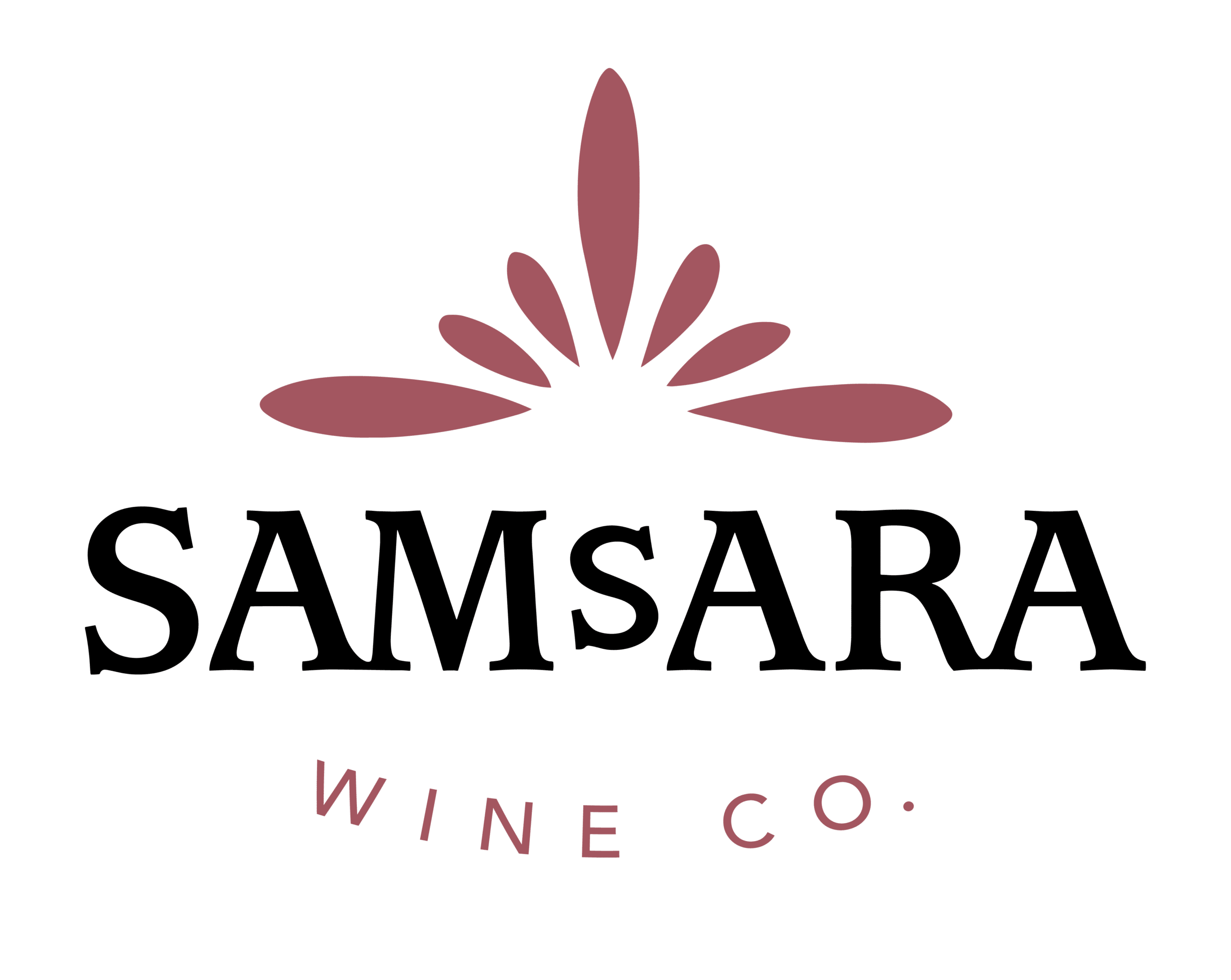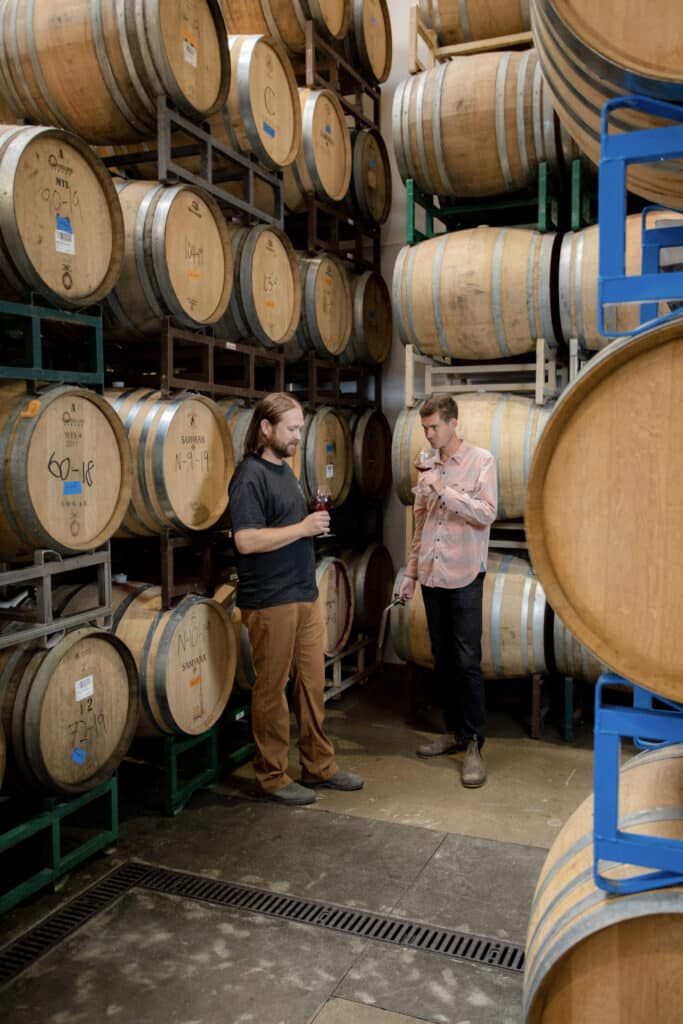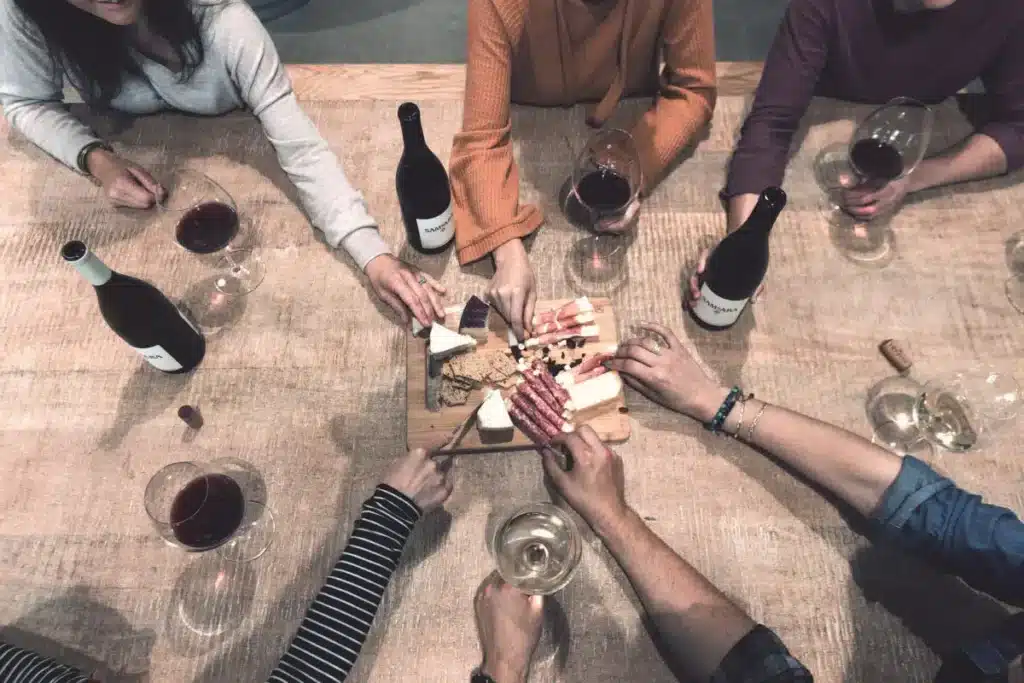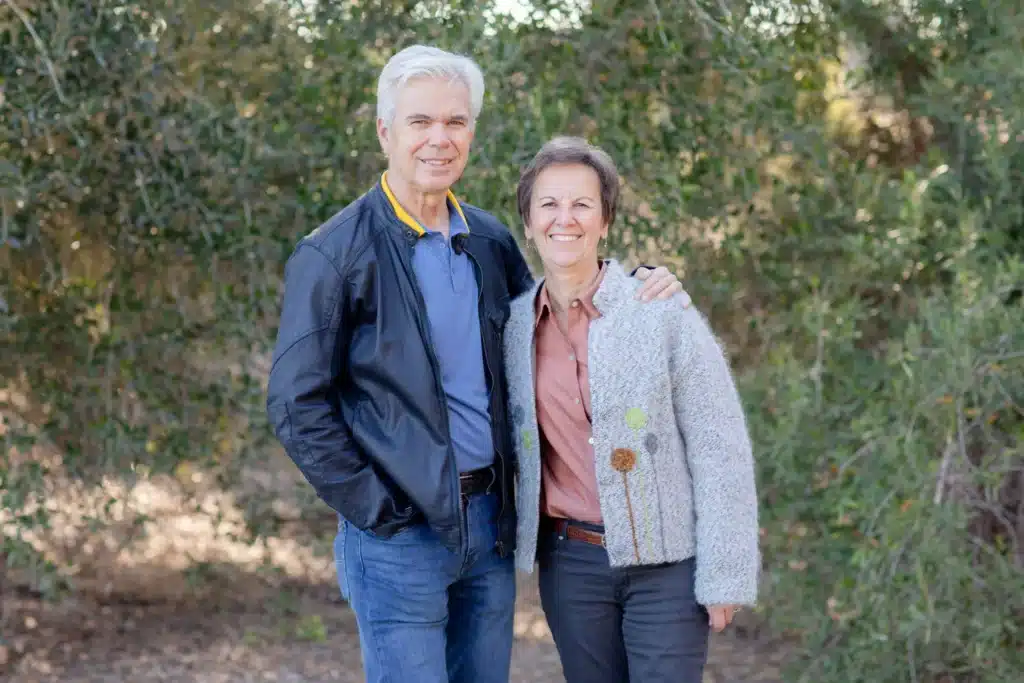No products in the cart.
The Wine Write – A Chat With Matt Brady of SAMsARA Wine Co.
Talk about a seamless transition.
Chad and Mary Melville started SAMsARA Wines in 2002 to focus on single vineyard Pinot Noir and Syrah from top sites in Santa Barbara County. After years of successfully crafting wines that expressed the soils and site characteristics of those vineyards, the Melvilles were at a crossroads. Chad was devoting more and more time to the family operation, Melville Vineyards & Winery.
Joan and Dave Szkutak were long time devotees of SAMsARA and looking to enter the wine business. Matt Brady was also a fan and between jobs, having left Jaffurs Wine Cellars after more than a decade making wine there. Can you see the planets aligning? The Szkutaks purchased SAMsARA in late 2017. By then old friend Chad Melville had invited Matt to lunch and pitched him on the winemaking position at SAMsARA. The Szkutaks knew of Matt already and admired his work at Jaffurs. All the dominoes fell in place.
It’s been a busy couple of years since those changes were made at SAMsARA. Matt Brady has tweaked the wines a bit. A new winery and tasting room facility has been built in Goleta, California. A Sta. Rita Hills Chardonnay program has made its debut. We’re happy to talk about all that and the future of SAMsARA this week, while also taking a glance back at the still budding career of winemaker Matt Brady.
The Wine Write: How important was Craig Jaffurs to you getting started on your wine journey?
Matt: He was a major influence. I really learned everything I know from Craig. Over the years I’ve built onto that knowledge from my own experiences, but Craig taught me a lot about solving wine challenges. The way I deal with issues now was molded by that time at Jaffurs. He taught me that a lot of winemaking is problem solving. Craig had really good winemaking instincts. He taught me to trust myself and my gut. By the end of my time there I used to joke that I knew what Craig wanted to do better than Craig knew what he wanted to do!
At Jaffurs the standards were really high. That got ingrained into my own DNA. To this day when I see a pallet that’s parked a bit off center it irks me. I probably have Craig to thank for that. He chiseled into me the importance of running a tight ship. There is a lot of fun in the wine business, but when it comes to running the cellar we keep it tight.
The Wine Write: You went to school in Santa Barbara.
Matt: I got a Global Studies degree from U.C.- Santa Barbara. I fell in love with wine there. On the weekends we would spend a lot of time visiting tasting rooms and wineries. It was cool to explore this up and coming wine region in our back yard. UCSB also offered an introduction to wine class that opened my eyes and sparked my interest. After a year of visiting and tasting I thought about getting a job at a winery. The worst case scenario was that I’d have a funny story to tell someday. I didn’t see it as a career path, but I thought the work might increase my interest and knowledge of wine. And then I got sucked in. There was no going back.
The Wine Write: Did the work appeal to you from the start?
Matt: Uh….I remember it being a lot of work. 2005 was my first vintage at Jaffurs. I had started working there over the summer while I was still completing courses to finish up my degree. I was doing cellar work like topping barrels and helping with the bottling. A month before harvest they asked if I wanted to be their harvest guy. I thought that sounded great. I was digging all of it.
Then harvest came around. I was doing all the punchdowns and other production labor. That was certainly the most physical labor I had ever done. It dawned on me how hard winery work could be. It whipped me into shape. Looking back on it those were very formative times.
The Wine Write: How was the wine scene then?
Matt: It was really cool, not just in Santa Barbara, but in the whole area. “Sideways” had come out. There was a lot of momentum in Santa Barbara County. New brands were popping up. I was just a twenty-two year old kid getting started at Jaffurs, but there were a lot of people who were super supportive to me. I remember the first time I met the late Seth Kunin at the Vintner’s Festival. He was wearing his “Listen to Bob Marley” shirt. He didn’t look at me as a kid who knew nothing. He welcomed me to taste through his wines while he talked about them. That’s just one example. The industry here was in a really great place. I feel very lucky to have started when I did. I got into wine at the beginning of our big upswing. It’s sort of a different landscape now. There are a lot more vineyards. People realize that there is still untapped potential here.
The Wine Write: Tell me about the attraction of the SAMsARA job.
Matt: The wine style was right on the bullseye for me. That made this move feel right to me from the beginning. It lit a fire under me to make the job happen. I had loved the wines forever. I was excited about working with cool climate grapes with their bright and fresh acidity. The use of stem inclusion excited me. A lot of the wines are whole-cluster dominant. We had explored some whole cluster at Jaffurs. Year after year those were always my favorite barrels.
That reminds me of a story. I went to the Northern Rhone with a group of California winemakers on a trip arranged by Decanter magazine. We had the opportunity to pour some of our wines for the French producers we visited. I brought a 2011 Jaffurs Syrah that had about forty percent whole cluster. One of the French winemakers asked about stem inclusion and I told him the forty percent number. He asked why that percent and I replied that those were our favorite barrels each year, but that we had the perception that the market wasn’t ready for a wine with more than that amount of whole cluster. He looked at me like I was crazy. He couldn’t fathom why we wouldn’t do more whole cluster if those were always our favorite barrels. Makes it sound pretty simple when someone puts it like that!
SAMsARA was a few steps closer to that style in terms of stem inclusion. The whole philosophy of a minimalist approach and making wines driven by texture, spice, and balance checked all my boxes.
The Wine Write: How did the job actually come about?
Matt: Chad Melville is a good friend of mine. After I left Jaffurs, he and I had lunch one day and he threw the SAMsARA winemaker job out there as an idea. Chad’s world was changing with his increased role at Melville after Greg Brewer moved on. It happened pretty organically. I took off for a Southeast Asia beach vacation shortly after that lunch. Chad told me to think about SAMsARA while I was in Bali. It turns out I was on the beach when Chad called me. A couple who had known him for ten years and were huge SAMsARA fans were talking about buying the brand. They wanted to chat with me about making the wine. That was my introduction to Joan and Dave Szkutak, who now own the winery. The three of us teamed up to launch SAMsARA 2.0. Everything just fell into place. It felt right at the time and it still feels right.
The Wine Write: Your vineyard sources read like an all star lineup.
Matt: That is huge. It’s been critical for our brand. We have a new Chardonnay program and a new facility in Goleta, California. Having access to all those top sites has positioned us for a lot of success. And we couldn’t do any of this without our vineyard partners. My friends at Coastal Vineyard Care Associates, who manage virtually all the top vineyards in Santa Barbara County, stepped up and made some special fruit available to us, especially in the Sta. Rita Hills. Part of that is due to the relationships I’ve built with those guys over the years at Jaffurs. I think they had confidence in me and what we were doing at SAMsARA. They knew we could make some special wines from this beautiful fruit. That was a bit of a leap of faith on their end, but it has worked out very well.
The Wine Write: With a top flight vineyard management company like CVCA on board, how involved personally are you with the vineyards?
Matt: In the early part of the year I’m in our vineyards once a week. As harvest approaches I’ll be out there three times a week or so. We have so many sites now that it’s hard to knock them all out in a day. We pay top dollar for our fruit. These vineyards are the best among the best. If we ask Coastal Vineyard Care Associates to do something, they do it. They’re very responsive. Generally we don’t even have to ask. Their level of farming is impeccable. It’s rare to go out to a vineyard and have an “Oh, Shit” moment. We work with a lot of beautiful fruit and there’s a lot of vineyard effort to get it there. I think when the vineyard guys see you out there it demonstrates a connection with the farming. That helps. It tells them that farming is important to you. It’s sort of like the squeaky wheel gets the grease, but you don’t have to squeak too much.
The Wine Write: As good as Pinot Noir from the Sta. Rita Hills is, there’s an argument to be made that Chardonnay is even better.
Matt: The Chardonnay program here is brand new. It wasn’t something that was produced before I joined the team. We’ve had a lot of success with those wines. It’s probably the varietal I’m most excited about right now. Never in a million years would I have guessed that I’d be a Chardonnay maker. Now I am really psyched about it. Chardonnay and the Sta. Rita Hills is a match made in heaven. I think we will all be singing the praises of Chardonnay from that region in ten years.
I don’t know if Pinot Noir can continue to escalate at the same rate it’s been going in terms of vineyard planting and everything else. Take a vineyard like Bentrock. I think about ninety acres are planted there, with only fourteen planted to Chardonnay. The rest is Pinot Noir. And most vineyards have even a more skewed ratio. There isn’t a lot of Chardonnay out there. It’s so well suited for the Sta. Rita Hills and all the soil complexity and mineral deposits. We’re able to pick ripe fruit with ripping acid. It’s the perfect storm for making balanced, complex wines.
We’re working with some really nice vineyards like Bentrock, Zotovich, John Sebastiano, Spear, Kessler-Haak, and Donnachadh. Those are some good Chardonnay sources. And we’re open to add to that. One thing that could happen as the result of COVID-19 is that some vineyards that have been hard to get into may have some fruit available this year. We’re on the hunt for that next superstar Chardonnay vineyard. I’d love to get some from La Encantada. I love working with Pinot Noir from there. It will be fun to track over the years. We think we will eventually become as well known for Chardonnay as we are for Pinot Noir. And that goes for the whole of Sta. Rita Hills.
The Wine Write: You’re making SAMsARA in Goleta, which is a bit off the beaten path. How is that working out?
Matt: It’s been pretty cool. We needed a new facility. Chad had made the wines in Lompoc. After the lease ran out on that space we were sort of homeless. We looked all over. Santa Barbara was a bit cost prohibitive. I think the rest of the world thought I wanted the winery in Goleta because I live in Santa Barbara. It is very convenient for me. That’s a fact. Goleta seemed like an untapped area. The only winery here before us was Kunin Wines. Seth and his wife Magan had moved their winery here from Santa Maria. Unfortunately Seth barely got to enjoy his new Goleta winery before he passed away. That was so sad.
But I’m really happy we landed here. We don’t get a lot of foot traffic yet. People have to know about us or get told about us to make their way here. So there’s a bit of a challenge on the tasting room and sales side of the business. It’s an awesome winemaking facility. We’re less than two miles from the ocean and right by the 101. It’s nice and cool here. It’s only thirty-five minutes to the Sta. Rita Hills. The logistics are good. Our fruit gets picked early and is at our door by seven or eight in the morning.
The city of Goleta was easy to work with in the building process. Things were moving within a matter of weeks. The production side of the facility was built out in six weeks. We had been told that was an impossible goal. We wound up moving a day before we picked our first fruit in 2018. The whole process was cool to me because I got to work with a contractor to build a winery to fit my winemaking needs. That was a dream. There are only a couple of things we’ll do differently with the next winery we build! This is a really comfortable place to make wine. It seems like there are opportunities for other wineries to join us in Goleta. It would be great to have a few more high quality producers out here to make Goleta more of a destination.
The Wine Write: Have you thought about the impacts of COVID-19 on the 2020 harvest?
Matt: I’ve thought about that for sure. Basically it’s just going to slow us down. We did a bottling in the middle of April and took a lot of extra measures to work safely. Everyone wore gloves and masks. We did a really good job on the safety side. It’s no fun working all day in a mask. It does slow you down. But that’s the reality of this year’s harvest.
We are planning to make a little less wine this year. We’ve been forced to make some tough decisions. We like our whole lineup of vineyards, but we will probably concentrate this year on the sites that we believe in the most and think are the strongest. The reduction in tonnage we need to process may balance out the extra time it will take to do our harvest work using COVID precautions. At the end of the day it may be a wash. We will be working with a smaller crew to maintain social distancing on the sorting table and other areas. It will take us a little longer to do everything, but we will make it work.
The Wine Write: Has there been a sales impact from the pandemic to any great degree?
Matt: We’ve been pretty aggressive in trying to stay engaged with our customers. We’re doing a lot of things that we had previously talked about trying. We wanted to do more social media and virtual events to interact with people who could not be here with us physically. COVID-19 forced us to accelerate those plans. It’s been a crash course in social media and online sales. I’ve done an Instagram live stream with Brandon Sparks-Gillis of Dragonette Cellars. We’ve been doing weekly vineyard videos on YouTube. On Saturdays we’re doing live ZOOM tastings for club members and customers. So we’re pretty active in the virtual world. The sales have been pretty good. It doesn’t replace all the distribution sales and tasting room purchases that were impacted by COVID. It feels like you’re having to work twice as hard to get the same impact.
The positive part of this is that the people who are connecting with us on these various platforms are really getting a lot out of it. It’s been fun for us, too. I did an Instagram Live thing with our friend Phil Carpenter awhile back. Lily, our Hospitality Director, texted me a few minutes later reminding me of a private Zoom tasting starting in ten minutes. I ended up talking to those nice folks for almost two hours. It was fun. They were asking great questions. It turns out that I can socialize and talk about wine. Who knew?
The Wine Write: Are you as big a proponent of neutral barrels as Chad Melville?
Matt: Uh, I guess I have to say no, because I do use some new oak. Chad doesn’t use any! I am pretty close to him philosophically. I do think there is a place for new oak in Pinot Noir. We may use about twenty-five percent or so with Pinot. New oak doesn’t make sense for me with Grenache. We haven’t used any new oak in our Chardonnay program. There may be a spot for some new oak with Chardonnay at some point.
I want to work with barrels that don’t have a huge aromatic aspect. I want them to enhance the wine’s texture. It’s sort of like using whole clusters in the sense that you want it to be there, but not overwhelm. I don’t want the wines to smell stemmy, but I do want the structure they impart. I don’t want to smell oak, but I do want the role it can play. It’s hard to make a case for a lot of new oak when your goal is for it to be in there without having to taste it or smell it!
To help achieve our goals we’ve shifted to a lot of five hundred liter barrels for the new oak component of our Pinot Noirs. I love those! We’ve used them the last few vintages and may go to them exclusively. The larger format barrels seem to give the wines more freshness and energy. There’s less oak impact, but I still get that mouthfeel and weight I’m seeking. I’ve narrowed down my coopers to just a few that give me that texture and elegance I want. It sort of gives me the bones to a skeleton. It provides a frame for the wines to stick on. I think our low percentage of new oak, especially using larger format barrels, is in line with our minimalist philosophy towards winemaking. I would never want to open a SAMsARA wine and have anyone on the planet think it smelled or tasted oaky. That’s not the profile or direction we’re going.
The Wine Write: What can people who have yet to experience SAMsARA wines expect?
Matt: The SAMsARA wines are balance driven. The common denominator for our Pinot Noir, Grenache, and Syrah is texture and mouthfeel. We get a lacquer-like, mouth-coating quality in those wines. There is more density to the mid-palate. They are powerful wines, but that strength isn’t driven through ripeness. The extra weight and additional layers impart that strength. Whole cluster fermentation is how we achieve a lot of that in our red wine lineup. That can be a bit counterintuitive. You might think the stems are going to add a green element or a hard tannic edge to the wine. That can happen, but with the right vineyard sites it works. The level of stem inclusion certainly varies by vineyard. It’s really site specific. The stems give us more structure, but it’s a soft frame.
From an aromatic perspective there’s always a nice fruit component. I always tell people that Santa Barbara County is a great place to be a grape. We have a long growing season. It’s always sunny. Along with the fruit we get spice and savoriness to add to the complexity of the wines. I used to think the stems just added spice. Now I believe that they also accentuate the aromatics. I’ll probably change my mind again in five years as I keep learning. That’s one of the humbling things about winemaking. Your theories and positions evolve.
We work with cool climate sites, so we get nice acidity. We use native yeasts for everything. One of the benefits of native yeasts is the kinetics. The fermentations move a bit slower. Because we’re doing twenty-five to thirty days of skin contact having a slow burn like that is great. Those longer macerations also help us achieve that greater weight I mentioned earlier. That structure helps with longevity. Our wines taste good out of the gate, but tasting some of the older wines that Chad made here is really eye-opening. This style really stands the test of time.
The wines that we are now producing might be a tad leaner and lower in alcohol than what Chad made. We want to make balanced, elegant, low alcohol wines that produce a wow factor and some power. That extra texture, mouthfeel, and weight get us there.
The Wine Write: We left this conversation thirsting for some SAMsARA wine. Did you?





